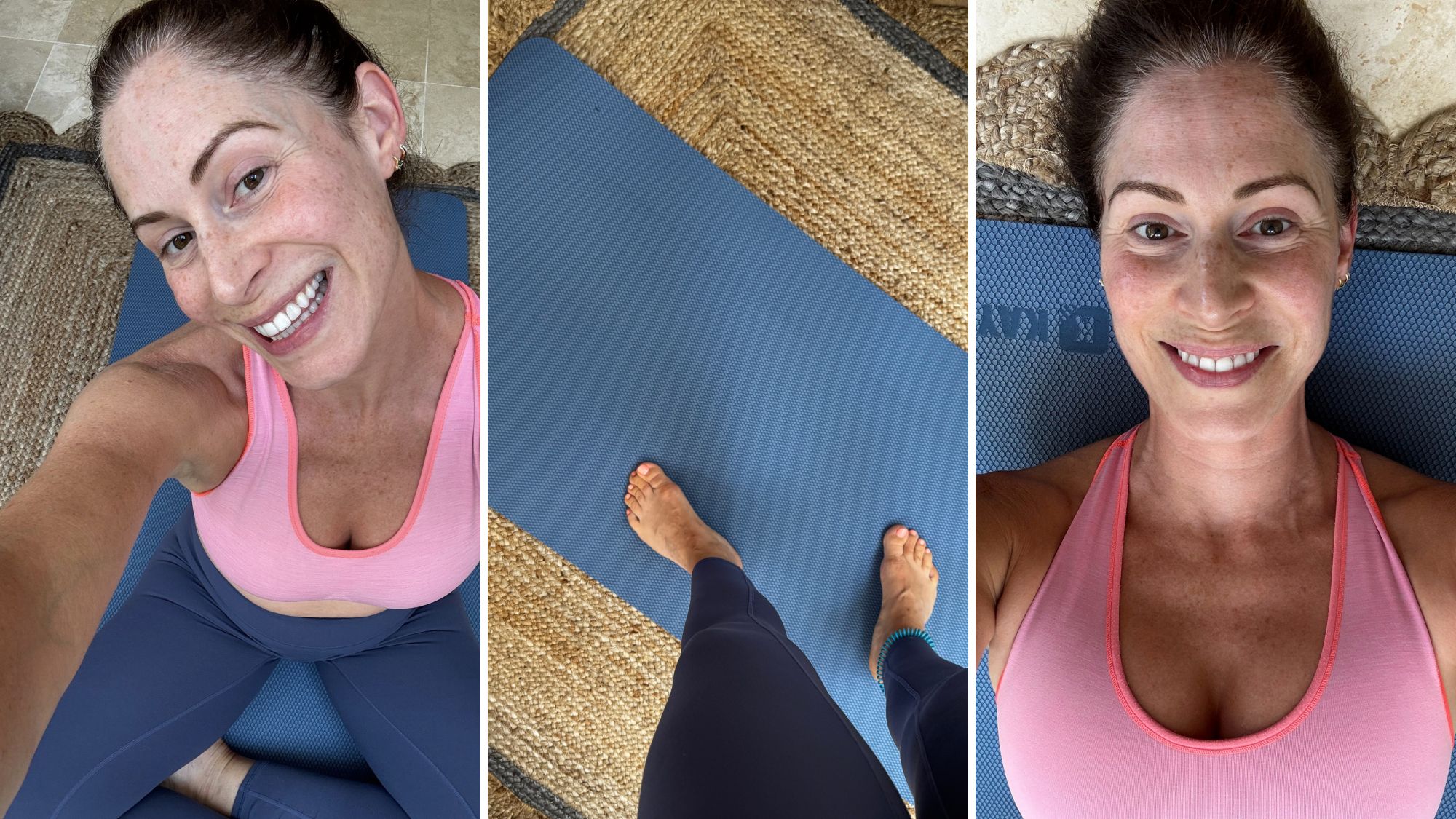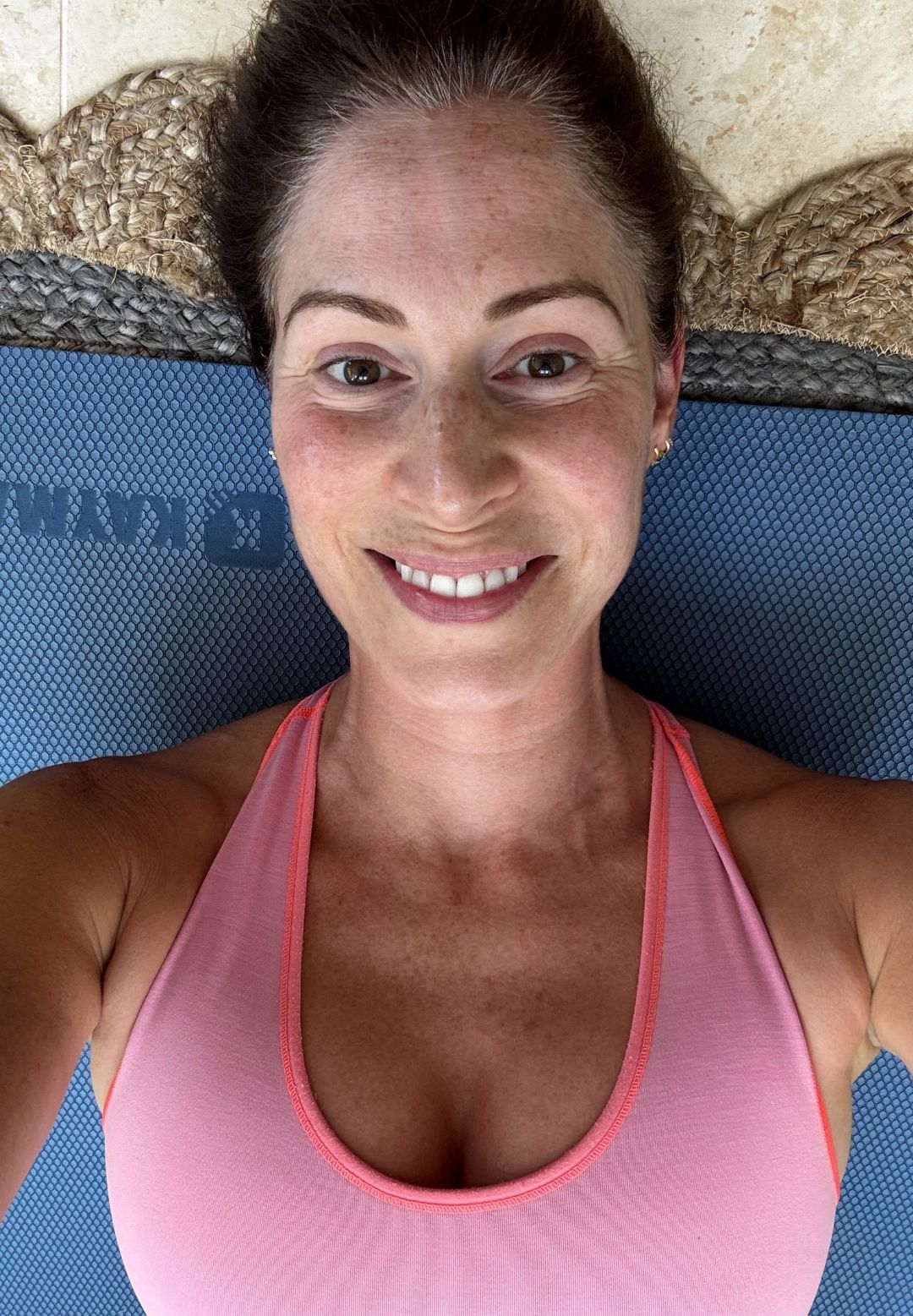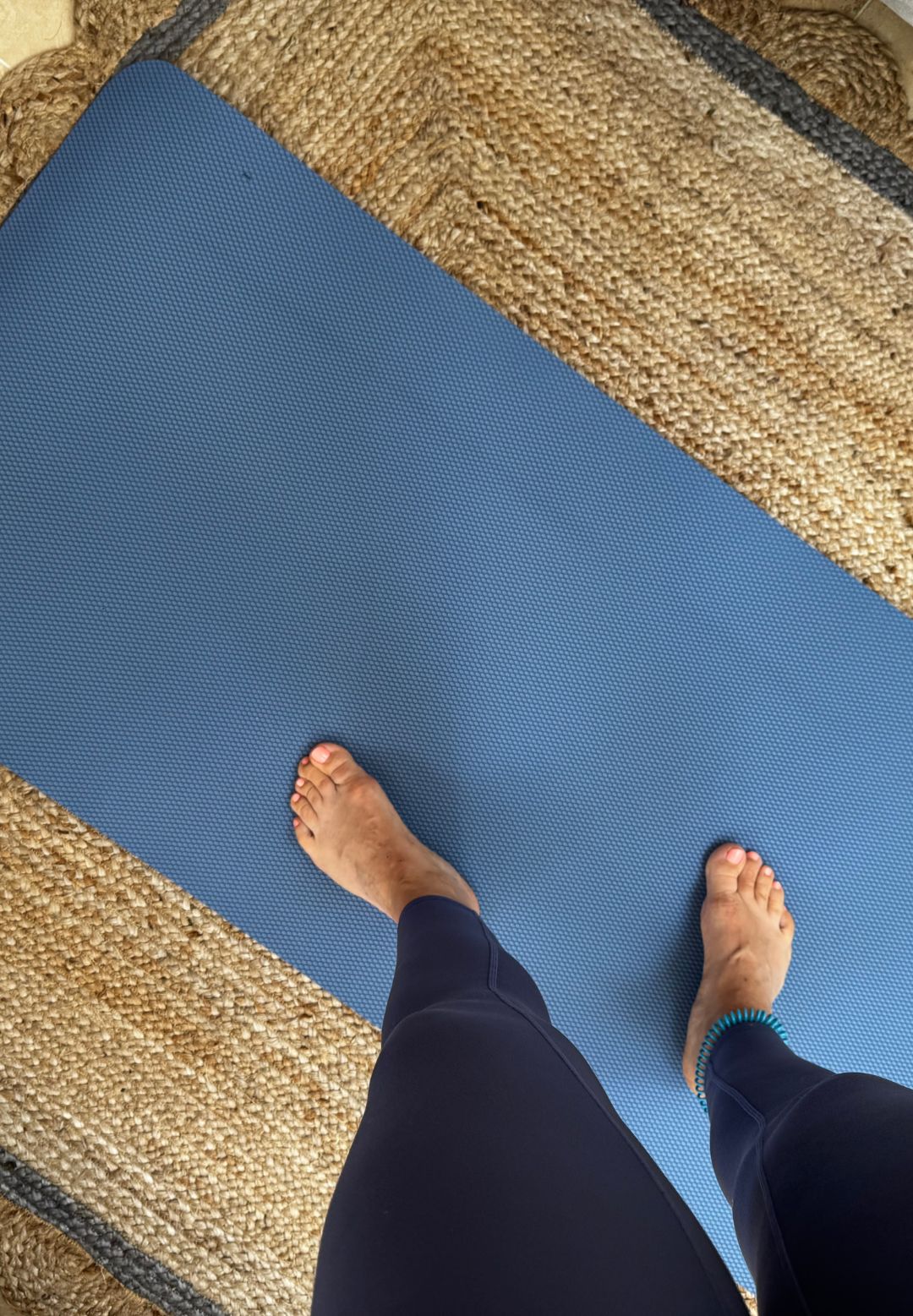I Tried the 5-5-5-30 Morning Routine To See if It Would Really Boost My Energy and Focus – and, Wow
Ten minutes is all it takes to set yourself up for a great day.


It's fair to say that I've never been a morning person. In an ideal world, I'd workout, diary plan, and do all my creative work late into the night, safe in the knowledge that I'd still be blissfully slumbering while the rest of the world was starting their day.
My reality, however, is totally different. I'm a busy mum of three, so early mornings go hand in hand with a to-do list as long as both my arms, and I'm currently in the throes of perimenopause too, which has sent my energy and focus even more haywire than usual.
But the truth is that I need to be both energetic and productive, otherwise I spend my days chasing my tail and trying to catch the many plates I'm spinning before they crash to the ground. So, in an attempt to overhaul my mornings, I've been increasingly drawn to the plethora of morning routines that are filling up my FY page.
While I'm on board with the theory of gratitude journaling, holistic morning rituals and more, the likelihood is that I'll have my zen interrupted by a teen searching for a school uniform, or a tween toothbrushing refusnik. As such, I've always assumed that a morning routine just isn't for me, for the time being at least.
But then, I came across the 5-5-5-30 method. Short, sharp, and (rumoured to be) effective at boosting energy and focus, could it be just the overhaul my 7 to 9 needs? I couldn't wait to find out.
Keen to find out if I'm a morning convert? Keep reading - but in the meantime, do check out our guides to the best morning routine ideas, the wildly viral Mel Robbins morning routine and a trainer's ideal morning workout routine. For other numbers-based workout routines and productivity hacks, don't miss our explainers on the 25-7-2 workout, 3-2-8 method and 5-10-15 challenge, here.
I tried the 5-5-5-30 morning routine to supercharge my energy and focus - here are my unfiltered thoughts
What is the 5-5-5-30 routine?
You'll have gleaned from the above that I need my mornings streamlined, not made more complex, and the 5-5-5-30 routine is refreshingly simple. Essentially, you complete four exercises in a circuit as soon as you wake up. Easy, right?
Celebrity news, beauty, fashion advice, and fascinating features, delivered straight to your inbox!
"The 5-5-5-30 method is a short, simple morning movement routine," shares personal trainer and founder of Cadence Indoor Cycling, Melissa Power. "Put simply, as soon as you wake up, it's five push-ups, five squats, five lunges (per leg) and a 30-second plank. The idea is to wake your body up, get your blood flowing, and tick off some strength-based movement before your day properly begins. Think of it as a mini circuit to shake off sleep and boost your energy."
Who invented the 5-5-5-30 routine?
While a morning routine idea is nothing new (and there's certainly quite a plethora floating around the internet), this one is the brainchild of entrepreneur and author of the New York Times bestselling book, The 5 Types of Wealth, Sahil Bloom.
He devised the method in response to research (published in the journal Translational Sports Medicine) showing that just two minutes of exercise at a moderate to high intensity can help boost attention span, concentration, learning and memory over the following two hours.
But rather than two straight minutes of, say, burpees (which surely no one wants), Bloom's rationale is simple: do a full-body circuit that won't stress you too much, but will get the blood pumping and motivate you to crush your morning goals.
What are the benefits of the 5-5-5-30 morning routine?
The method certainly sounds doable, but is it worth my time? I needed to find out.
And, reassuringly, there don't seem to be any real downsides to setting aside a few morning minutes to move our bodies. Let's take a look at what the experts make of it.
1. It's great for habit-building
A short, effective routine that isn't too taxing is the perfect entry-level routine, especially if (like me) you have form in starting a new habit and giving up after a few weeks.
"Shorter duration routines or workouts can be easier to align with a daily routine," explains psychotherapist and fitness instructor Eloise Skinner. "This is generally because they're easier to commit to doing every morning or evening, rather than a longer workout.
"Daily commitments can be great for forming habits and building resilience over time, allowing an individual to prove to themselves that they're capable of upholding new behavioural choices."
2. It's a great mood booster
"The short duration of the routine is also a way to ensure that we don't overexhaust the body or overwhelm the mind," notes Skinner. "The aim is to finish the workout on a happy high instead of a depleted state, meaning we might be able to benefit from greater gains in productivity and motivation throughout our day."
3. It wakes up both body and brain
One of the things I'm keen to work on is my productivity and focus, so will spending the first few moments of my day lunging and squatting really benefit this? In a word: yes.
"The intensity of the workout might also deliver a boost to focus and productivity," advises Skinner. "The combination of improved blood circulation in the body (including to the brain) and endorphins firing can make us feel ready and prepared to start our day."
4. It's easy and accessible
Even the most workout-shy of us should be able to manage this circuit, and if not, there's no shame in working your way up. You can quite literally do it anywhere - it's the perfect holiday mini-workout - and you don't need any special knowledge or equipment to nail it.
5. It works all the major muscle groups
While it'll probably take you less than five minutes to complete, when it comes to bang for your buck, the routine is pretty elite, recruiting large muscles with big, powerful moves.
"It’s quick, accessible, and gets key muscle groups firing," agrees Power. "You’re hitting the upper body, lower body, and core in under two minutes, which is a great way to reconnect with your body first thing. You’re not going to build huge strength with five reps, but you are reminding your body how to move well."
6. You're likely to want to carry on
"Will you dramatically increase muscle mass or improve your aerobic endurance with the 5-5-5-30 method? No, and that’s why strength and cardiovascular training are still a must," says performance coach Arj Theruchelvam.
"However, it may help you to create positive, active and health-seeking behaviours that lead to becoming a healthier person. Over time, this may easily progress into more formalised exercise, increasing the repetitions or even starting a strength or cardiovascular routine."
I tried the 5-5-5-30 morning routine every day for a week - here's my honest take
Days one to three
Compared to some of the other challenges I've tried in the name of journalism, the 5-5-5-30 routine seemed like it was going to be a breeze. But when the first day rolled around, I found the biggest challenge was remembering to actually do it (here's hoping the focus kicks in quickly).
So, full disclosure, the first day I didn't remember until around 11 am, when I silently berated myself and dropped to my exercise mat, bootcamp style. And, having done the short and sweet circuit, the experts were right: I did want to carry on. So much so, in fact, that I tacked a strength workout onto the end of the routine, turning it into a little full-body warm-up.
As for my focus and productivity that day? I'll level with you: I absolutely felt more motivated and focused immediately after the routine, but that did wear off again a few hours later (neuroscience isn't wrong). That said, I'm still taking it as a win.
Day two, and I fare slightly better, remembering to hit the deck as soon as I blearily stumble out of bed after multiple snoozes. And I certainly wake up fast - I'm surprised by just how much my heart is pounding by the end of the moves. I am pleasantly productive today too, but then I'm always a little more focused on a Tuesday, so I'm not sure I can attribute it all to the routine, but I'm happy to take it either way!
Day three is much the same, and I even feel like I'm settling into a little bit of a habit now, too. I even take the time to update my to-do list, something I'm always a little reluctant to attempt, which has to be a good sign.

Days four to seven
I spent the remaining part of the week attempting to fine-tune the routine, to make sure it's something I carry forward once the week is over. For me, this meant not actually doing it very first thing - I always take a daily probiotic shot in the morning, and have to allow ten minutes before I eat or drink anything, which proved to be the ideal window to complete the morning moves.
Usually, I'd likely waste this time scrolling on my phone while waiting to boil the kettle, studiously ignoring the far more urgent tasks at hand, but using time for some gentle movement not only stops me doomscrolling, but also energises me to tackle the morning chores as soon as I'm done.
Essentially, what I've done is habit-stacking at its finest: I've tacked the routine on top of my probiotic habit, meaning I'm more likely to stick with it: a gold star for me.
And the experts are reassuring about the day that I forgot to complete the routine, too. "Perhaps the biggest thing to consider is that it need not just be a morning thing," reassures personal trainer and founder of Carifit, Vern Hill. "Even if you don't do it until you've been sitting at your desk for two hours straight, do it then, or even do it during the adverts when you're watching TV. Use it as a way to mobilise, energise and feel positive throughout the day."
I love this approach - and I know that I'm much more likely to keep at it than if I'm feeling like a failure for forgetting. As for my focus and productivity, it turns out the science doesn't lie: I really do feel more energised and I'm able to power through my workload with unusual vigour. Whether it's all in my mind, I don't really care - the effects are definitely a positive, for me.
Fitness-wise, I wasn't expecting any huge gains, given that I'm pretty active every day regardless, but it was nice to intersperse my (prolonged) periods of sitting with some activity, and by the end of the week, I'm running through the routine as much as three or four times daily - it's the perfect exercise 'snack'.
Will I continue with the routine? Yes, I think I will. While it may not have transformed my fitness, it has reinvigorated my mindset and momentum - and that's a yes from me.

Shop MC UK's go-to workout essentials now:
Who is the 5-5-5-30 morning routine suitable for?
Refreshingly, there are no barriers to entry here.
"Most people will be able to complete the 5-5-5-30 regime, with a few caveats," advises Power. "It’s ideal for anyone looking to build consistency or add some gentle strength into their routine. If you’re a complete beginner, feel free to modify the movements, but (and this is really important) never drop to your knees for press-ups! Instead, elevate your upper body: use a coffee table, TV cabinet, or anything that will raise you up slightly. As you get stronger, you can get lower to the ground. And if you’re postnatal, recovering, or managing joint issues, just check that each move feels right in your body and adapt anything you need to."

Anna Bartter is a freelance journalist who writes about health, fitness and women's lifestyle for publications including Stylist, Metro and Psychologies, among others.
She's always on a quest to find a variety of fun and functional workouts that give you the most bang for your workout buck and she's passionate about championing movement for everyone's mental and physical wellbeing.


